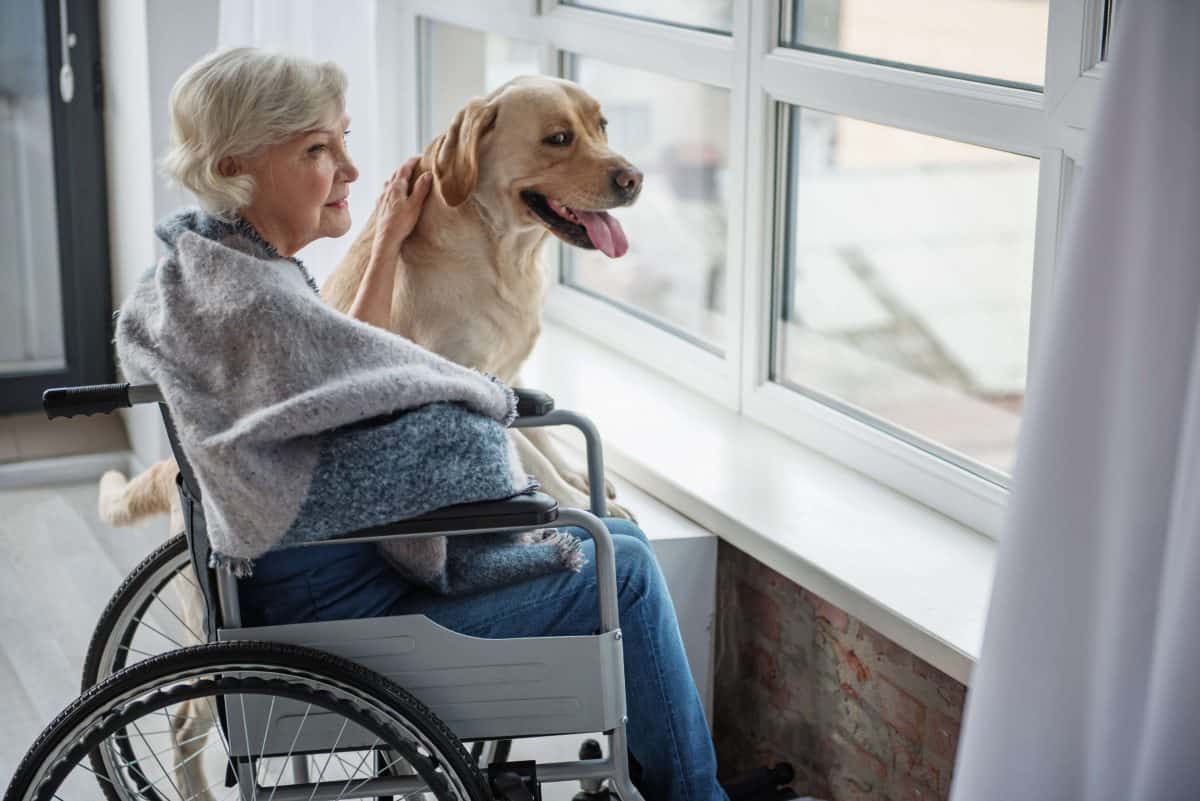Therapy Dogs vs. Emotional Support Dogs

Many people use the terms Therapy Dogs, Emotional Support Dogs, and Service Dogs interchangeably. But these titles have very different meanings. In this article we will dive into Therapy Dogs vs. Emotional Support Dogs.
If you are interested in learning more about the different kinds of Service Dogs, click here.
Therapy Dogs
Therapy Dogs are companion animals (pets) whose person brings them places to offer comfort and affection to people in need. A certificate must be obtained by either a national or local therapy team organization. Sometimes specific facilities will have their own testing and certification.
3 Categories of Therapy Dogs
1. Therapeutic Visitation Dogs are involved in the therapy team visiting hospitals, retirement facilities and other places where people need cheering and/or distraction. They might visit college students cramming for finals. You may see them entertaining passengers waiting for flights at an airport.
2. Animal Assisted Therapy dogs work with medical or mental health professionals. In the medical field, these dogs may work in rehabilitation facilities. They help those with serious injuries regain limb motion or fine motor skills. Some mental health professionals use dogs as part of their therapy work with clients. Dogs allow adults and children to relax, play and open up more freely.
3. Facility Therapy Dogs are usually living at the nursing home where they work. Typically, a staff member is responsible for training and daily care of the dog. These dogs give comfort to the residents. They may also be trained to alert staff if a dementia patient is heading out certain doors.
Emotional Support Dogs
Emotional Support Dogs (ESD) are different from therapy dogs. ESDs are defined by the American with Disabilities Act (ADA) as,
“an animal [which] provides companionship, relieves loneliness and sometimes helps with depression, anxiety or certain phobias, but do not have special training to perform tasks that assist people with disabilities.”
This is an important distinction. Emotional Support Dogs are pets, and not service dogs. They provide comfort to their person, but they are not going to facilities to provide comfort to others. They do not have permission to be in any public area that pet dogs are not allowed. The only allowances for ESDs is in pet-free housing and riding in the cabin of an airplane.
A written prescription from a medical or mental health provider is required. With such a letter, a landlord cannot deny housing to a person with an Emotional Support Dog, even if that housing is listed as ‘no pets’. Likewise, an airline may not forbid the dog from being in the cabin if the person has a legitimate prescription from their doctor. But note, a dog who acts aggressively may be forbidden to board a plane even if they are designated an ESD.
Author - Jody Epstein
Jody Epstein is a certified behavior consultant, certified professional dog trainer, and holds a master’s degree in animal behavior from Tufts University. She has been training professionally for more than 12 years and is pleased to be part of the Academy of Pet Careers team, teaching the next generation of trainers. Look out for her blogs on all things dog training and animal behavior.

